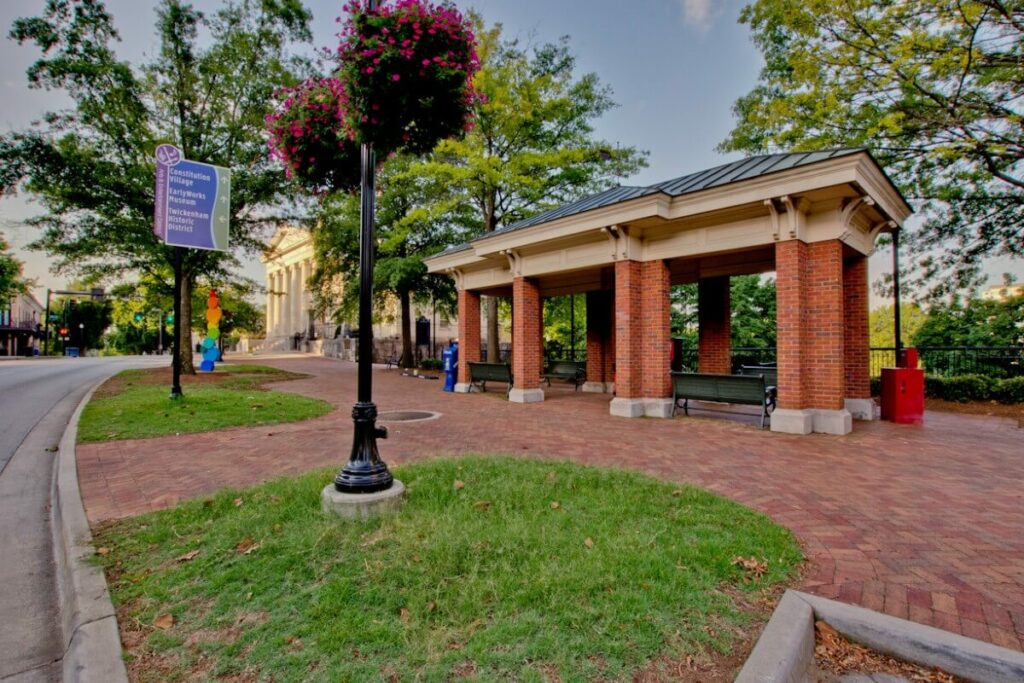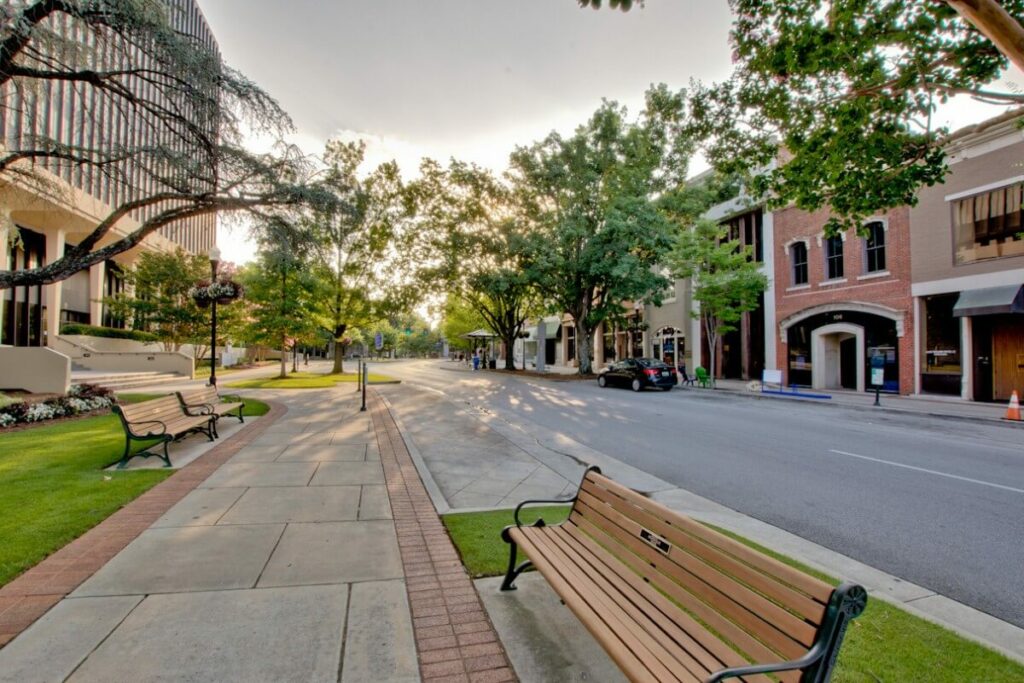


Huntsville was founded within the Mississippi Territory in 1805 and became an incorporated town in 1811. When Alabama was admitted as a state in 1819, Huntsville was designated for a year as the first capital, before that was moved to more central settlements. The city developed across nearby hills north of the Tennessee River, adding textile mills in the late nineteenth century.
Its major growth has taken place since World War II. During the war, the Army established Redstone Arsenal near here with a chemical weapons plant, and nearby related facilities. After the war, additional research was conducted at Redstone Arsenal on rockets, followed by adaptations for space exploration. NASA’s Marshall Space Flight Center, the United States Army Aviation and Missile Command, and most recently the FBI’s operational support headquarters all came to be located at nearby Redstone Arsenal.[13] The National Trust for Historic Preservation named Huntsville to its “America’s Dozen Distinctive Destinations for 2010” list.[14]
The city’s population is 215,006 as of the 2020 census, making it Alabama’s most populous city. Birmingham had been the largest since the growth of its coal and steel industries earlier in the 20th century. Huntsville is the largest city in the five-county Huntsville-Decatur-Albertville, AL Combined Statistical Area. The Huntsville metropolitan area’s population was 491,723 as of 2020, making it the second most populous metropolitan area in the state after the Birmingham metropolitan area.












